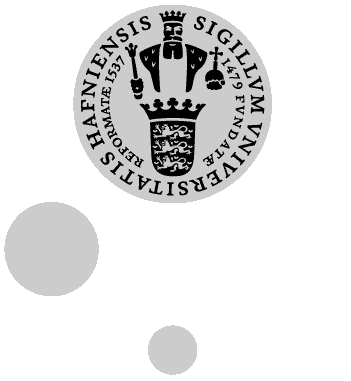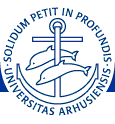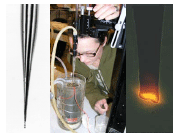

June 18- 27, 2014
COURSE MATERIALS (to be updated!):
Below we list some relevant reviews related to microsensors and microenvironmental imging. PDF reprints can be downloaded as indicated. You may also want to look on this web site for more microsensor related publications. A good starting point is the review of Revsbech&Jørgensen (1986). More material will follow.
Amman, R. and Kühl, M. (1998). In situ methods for assessment of microorganisms and their activities. Current Opinion in Microbiology 1: 352-358. [PDF]
De Beer, D. and Kühl, M. (2001) Interfacial processes and activities in biofilms and microbial mats. In: B. P. Boudreau and B. B. Jørgensen (eds.), The Benthic Boundary Layer. Oxford University Press, Oxford, pp.374-394. [PDF]
De Beer, D. (2000) Potentiometric microsensors for in situ measurements in aquatic environments. In: J. Buffle and G. Horvai (eds.), In situ monitoring of aquatic systems. Wiley, Chichester, pp. 161-194. [PDF]
Glud, R. N., Gundersen, J., and Ramsing, N. B. (2000) Electrochemical and optical oxygen microsensors for in situ measurements. In: J. Buffle and G. Horvai (eds.), In situ monitoring of aquatic systems. Wiley, Chichester, pp. 19-73. [PDF]
Kühl, M. and Steuckart, C. (2000) Sensors for in situ analysis of sulfide in aquatic systems In: J. Buffle and G. Horvai (eds.), In situ monitoring of aquatic systems. Wiley, Chichester, pp. 121-159. [PDF]
Kühl, M. and Revsbech. N. P. (2001) Biogeochemical microsensors for boundary layer studies. In: B. P. Boudreau and B. B. Jørgensen (eds.), The Benthic Boundary Layer. Oxford University Press, Oxford, pp. 180-210. [PDF]
Kühl, M. (2005) Optical microsensors for analysis of microbial communities. In: J. R. Leadbetter (ed.), Environmental Microbiology. Methods in Enzymology 397: 166-199. [PDF]
Kühl, M. and Polerecky, L. (2008) Functional and structural imaging of phototrophic microbial commmunities and symbioses. Aquatic Microbial Ecology 53: 99-118.[PDF]
Revsbech, N. P. and Jørgensen, B. B. (1986) Microelectrodes: their use in microbial ecology. Advances in Microbial Ecology 9: 293-352. [PDF]
Revsbech, N. P., Kjær, T., Damgaard, L. R., Lorenzen, J., and Larsen, L. H. (2000) Biosensors for analysis of water, sludge and sediments with emphasis on microscale biosensors. In: J. Buffle and G. Horvai (eds.), In situ monitoring of aquatic systems. Wiley, Chichester, pp. 195-222. [PDF]
Revsbech, N. P. (2005). Analysis of microbial communities with electrochemical microsensors and microscale biosensors. In: J. R. Leadbetter (ed.), Environmental Microbiology. Methods in Enzymology 397: 147-166. [PDF]
Microsensor data analysis:
Berg, P., Risgaard-Petrsen, N. and Rysgaard, S. (1998) Interpretation of measured concentration profiles in sediment porewater. Limnology and Oceanography 43: 1500-1510. [PDF] [Software] [Input file] [Manual]
[zip file with the comlete package]
PROJECTS:
A significant part of the course involves experimental work with microsensors and related microscale techniques. The following microsensors and systems will be available for experimental work:
- Electrochemical microsensors for
O2, pH, H2, CO2, N2O, H2S, nitrate/nitrite,
- Fiber-optic microsensors for O2 and irradiance.
- Photosynthesis quantified via variable chlorophyll fluorescence measurements with microfibers and imaging
- A range of other microsensors
- Planar optode systems for O2 and pH imaging
Given the number of participants we will be able to define about 4-5 project groups of 3-5 persons each. This will be done within the first 2-3 days of the course.
